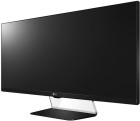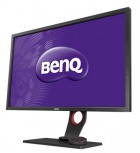AMD FreeSync Drivers and Monitors Are Finally Available in America
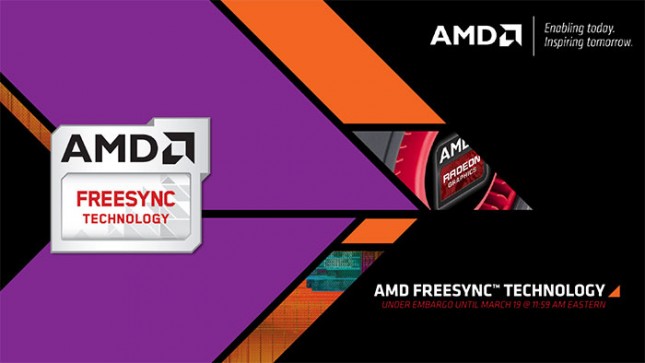
AMD Freesync is the next step in the evolution of AMD graphics technology. Today AMD is launching the drivers that will enable AMD Freesync on the compatible product stacks. In short, AMD FreeSync is an open standard product that is designed to enhance gameplay by dynamically changing the refresh rates of the monitor. Dynamically changing the refresh rate of the monitor isn’t done blindly, it’s synced to the graphics card to prevent image tearing and stuttering.
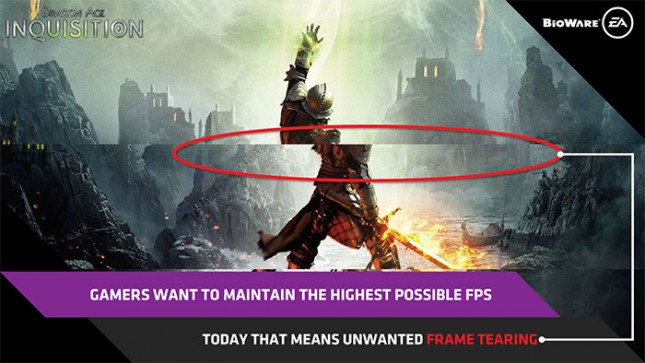
In the quest to hit the highest frame rate, there is occasionally a bit of tearing in the screen. If you’re like me, you didn’t notice it until it was pointed out to you. Now I can’t not notice it and it drives me up the proverbial wall!
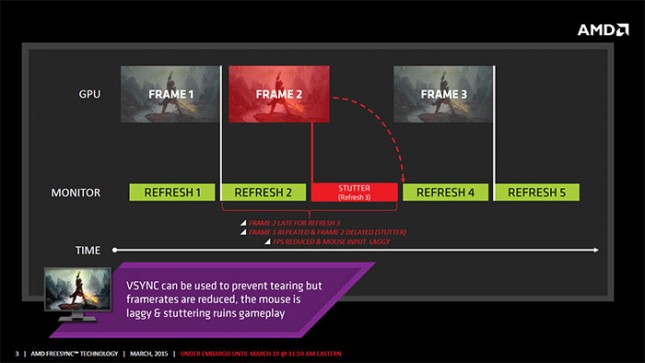
The above slide from AMD shows what causes the stutter. While GPU is rendering the next frame, the display is repeating the last frame until the next frame is ready to go. All of a sudden you’re three steps ahead of where you should have been while waiting for the next frame to render. Freesync takes care of that by syncing the monitor refresh and the GPU frame rendering.
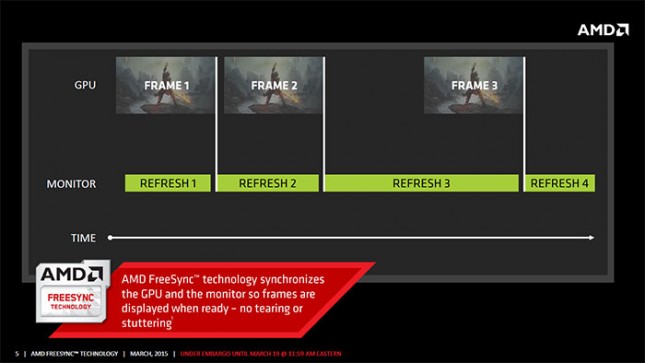
AMD Freesync is either slowing down or speeding up the monitor refresh rate to coincide with the frames being rendered. This will give us a tear & stutter free gaming experience!
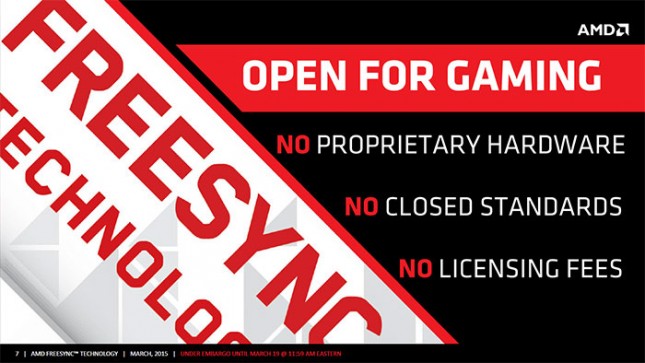
If you’re like me, cost to performance is always something to consider when looking at computer hardware and upgrades. AMD Freesync doesn’t add any cost to the end user. The hardware is already existing, so there’s no cost there. The standards are totally open for anybody to use, and there is no cost for licensing. I have a strange inkling that’s part of the reason this technology is being called Freesync!
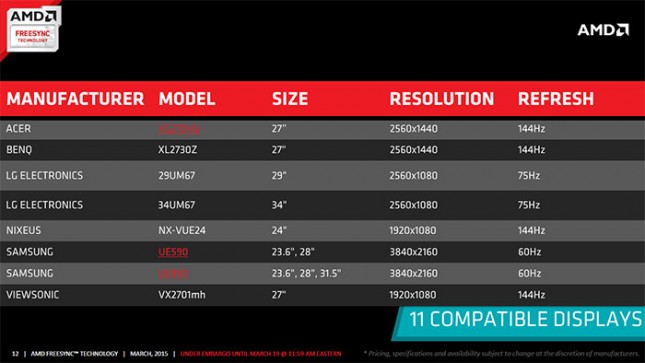
AMD FreeSync is going to have 11 compatible monitors announce right off the bat. Including monitors from ACER, BENQ, LG Electronics, Nixeus, Samsung, and Viewsonic. The ACER XG270HU, BENQ XL2730Z, and VIEWSONIC VX2701mh are each a 27″ monitor, the ACER and BenQ both feature a resolution of 2560×1440 while the Viewsonic is the only monitor of the bunch at only 1920×1080. LG Electronics is offering the LG 29UM67, and the LG 34UM67. Both of the LG monitors have a resolution of 2560×1080, but the LG 29UM67 is a 29″ monitor while the LG 34UM67 is a 34″ monitor. NIXEUS is offering up the NX-VUE24, a 24″ monitor at 1920×1080. Samsung is the only one putting out a couple of 4K Freesync monitors, the Samsung UE590 and the Samsung UE850. The Samsung UE590 is going to come in 23.6″and 28″ varieties. The Samsung UE850 is going to come in 23.6″, 28″, as well as a 31.5″ version.
The monitors are slowly becoming available. Last night Newegg.com listed the BenQ XL2730Z for sale. The XL2730Z is retailing for only $629.99. We should see more AMD FreeSync capable monitors hit the market soon.
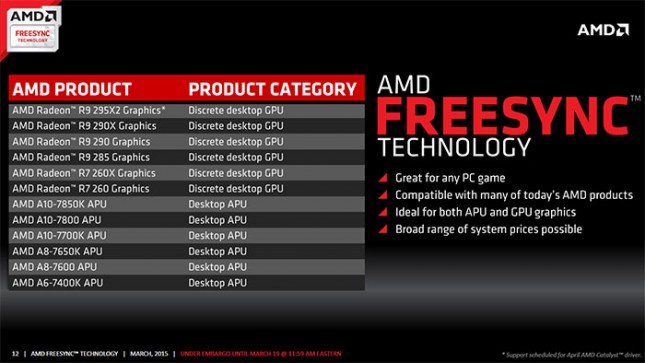
AMD FreeSync technology is going to be enabled and many of AMD’s current product line. One of the great features about FreeSync, it’s not limited to strictly the discrete GPU’s in the AMD Radeon stack, but it will also be enabled in the AMD 7000 APU’s! Whether you’re running the latest and greatest AMD Radeon R9 295X2 graphics card, or an AMD A6-7400K APU you’ll be able to benefit from this technology!
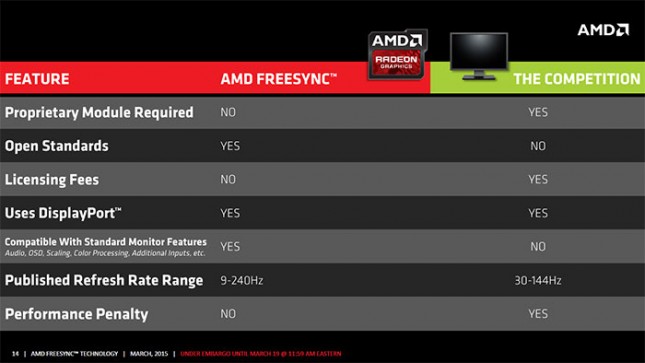
AMD FreeSync has a number of thins going for it over the competition as can be seen in the slide above. NVIDIA G-Sync requires a specific module installed into only a handful of compatible monitors, AMD FreeSync is a Firmware update to specific monitors. Yes, both of them are compatible with specific monitors, but the added cost of additional hardware for the competition is certainly a downfall for them while a firmware update doesn’t really cost anything. AMD FreeSync is based on open standards, has no licensing fees, is compatible with standard monitor features like audio, OSD, Scaling, Color Processing, & additional Inputs. Potentially the best aspect of AMD FreeSync is that there is no hit in performance like there is with the competition.
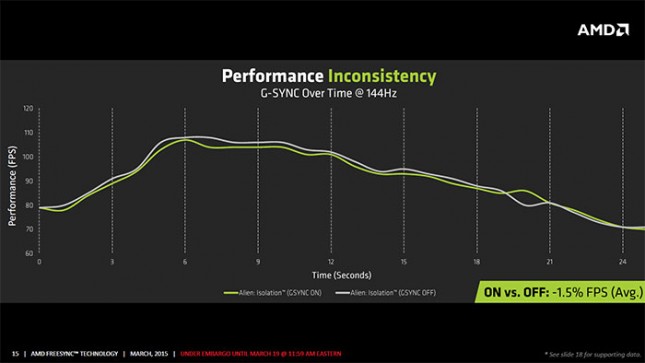
According to AMD, the competition takes a roughly 1.5% (average) hit to the performance in Alien Isolation
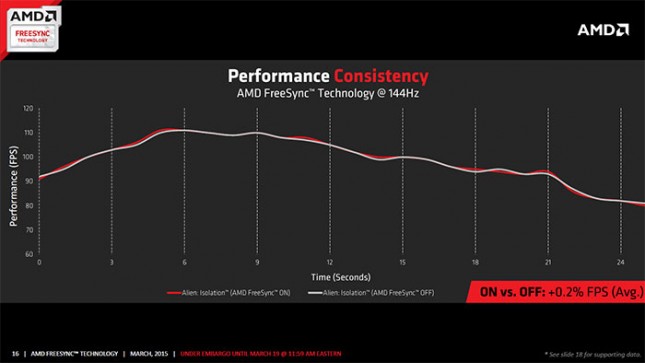
Once again, according to AMD, the performance in Alien Isolation increased by ~.2% while running AMD FreeSync. I wouldn’t call a gain of .2% mind blowing, but not only is AMD FreeSync improving the gaming experience while running Freesync, but improving the performance is pretty epic.
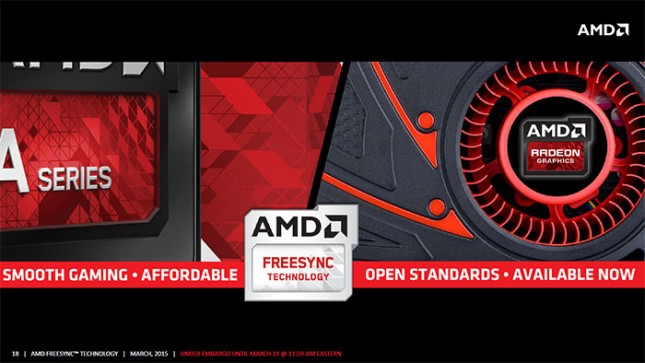
Now that the AMD Freesync drivers have been launched and the AMD Freesync monitors are starting to come out of the woodwork, what are you looking forward to most from AMD Freesync? Be sure to let us know in the comments or in the forums!

